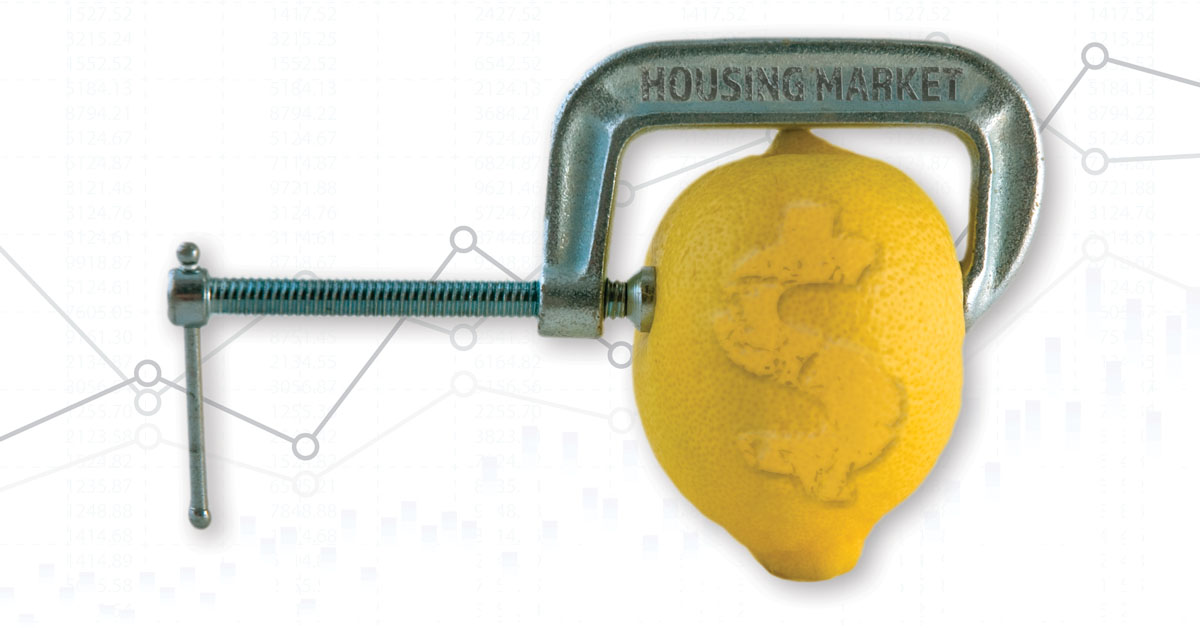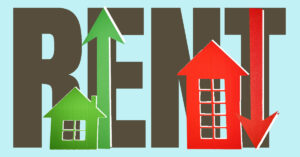The affordable housing market encompasses a variety of mortgage programs that focus on assisting low- and moderate-income borrowers in realizing the dream of homeownership. Affordable housing programs target borrowers with incomes on the lower spectrum of their area’s median income — a barometer for income based on the property location.
An affordable program typically has household income requirements based on the median income for the property address, which vary by program. For example, a program may allow for up to 80% of the annual median income for an area, or a maximum income of $80,000 in a neighborhood where the median income is $100,000.
“Despite recent market volatility and other pressing concerns among mortgage professionals, there is increased awareness about the need for affordable housing.”
While it is recommended that households spend no more than 30% of their income on monthly rent or mortgage payments, this target can be challenging for lower-income borrowers. One in every three households is burdened with limited disposable income to spend beyond basic needs, with many resorting to credit cards to stay afloat.
The current economic environment is plagued by rising interest rates, rapidly increasing home prices and inflationary pressures that are making it more difficult for low-income residents to afford housing. This combination of factors has served as the perfect storm to damage affordability metrics. In fact, the monthly mortgage payment as a share of median income has risen to 33.8%, according to the Urban Institute, even higher than the peak of 30.9% before the 2007 market crash. Mortgage originators should understand the challenges facing the affordable housing sector and the efforts to rectify these problems.
Challenges mount
This past July, benchmark interest rates reached their highest level in 22 years, contributing to the rapid rise in mortgage rates. As a result, some borrowers have turned to adjustable-rate mortgages, or ARMs, for affordability. In the first five months of 2022, for example, CoreLogic reported that homes purchased with ARMs increased by 75% compared to the same period a year earlier.
At the same time, active home listings are down across the board and there is far less supply in the lower price ranges. Homeowners are staying put instead of trading up so they can avoid having to take on a higher-priced mortgage. Entry-level construction is only a fraction of what it was in the 1970s and there are only 33 affordable homes available for every 100 needed, according to the National Low Income Housing Coalition.
There continues to be a stall in the construction of single-family homes, which remains below the pre-pandemic pace. And while construction of affordable housing has declined, demand has increased as the number of low- to moderate-income households has grown.
On the upside, there are close to half a million multifamily homes in the production pipeline, representing one of the highest numbers since the 1980s. Additionally, there was a 37% increase in multifamily originations (involving properties with five or more units) between the first and second quarters of this year.
This is important for affordable housing as these multifamily units provide additional options for renters. In a tough market, additional multifamily options provide some good news for households locked out of homeownership. In the background of this difficult landscape for affordable housing, there is action being taken on many levels of the public and private sectors. The federal government plays a key role in the affordable housing ecosystem through a variety of agencies and programs.
Answers pledged
The White House has introduced budgetary plans and Congress is attempting to pass affordable housing bills. The U.S. Department of Housing and Urban Development, the U.S. Department of Veterans Affairs and the U.S. Department of Agriculture play key support roles for housing assistance as their primary audiences are first-time homebuyers and low- to moderate-income borrowers.
The Biden administration has allocated $10 billion in its current budget for planning and capital grants, which are designed to reduce barriers for affordable housing projects and implement new tax credits. It has also introduced a Housing Supply Action Plan to advance administrative and legislative priorities. Many affordable housing bills are being introduced at the congressional level.
The government-sponsored enterprises, Fannie Mae and Freddie Mac, have set quotas to purchase certain amounts of their business from low- and moderate-income borrowers. More than half of loans to first-time homebuyers are purchased by the GSEs, so they are key players as they return capital to lenders and positively impact interest rates.
Additionally, state and local housing programs provide capital to push forward affordable housing initiatives. Some jurisdictions are teaming up to realize gains.
One example is a joint affordable housing plan developed by eight jurisdictions in Washington, D.C., Maryland and Virginia, with the goal to provide affordable housing and support services to low- and moderate-income residents. Local housing authorities and state housing finance agencies are doing key work to support tangible gains for communities.
In addition to action by federal, state and local governments, there are many efforts being undertaken by private enterprises. There are hundreds of nonprofits nationwide that support the affordable housing market through development, management and financing, as well as engagement in the latest education, training, networking and advocacy opportunities. Beyond nonprofits, there are many banks and lending institutions that have affordable housing wings. These private institutions pledge considerable time and resources to help the creation of affordable housing.
● ● ●
The rise of interest rates, rapid increases in home prices and a lack of adequate housing supply creates challenges for low- and moderate-income households to afford homeownership, even as the need for affordable housing grows. Despite recent market volatility and other pressing concerns among mortgage professionals, there is increased awareness about the need for affordable housing.
There never seems to be enough affordable housing to meet demand. But it is encouraging that private organizations and governmental bodies are actively looking for solutions, providing hope for the future of affordable housing. ●
Authors
-

Jean Ballard is a senior manager at Actualize Consulting, working in the mortgage and fixed-income practice. She earned a bachelor’s degree in finance and marketing from the University of Virginia, an MBA in finance from George Mason University and a master’s in project management from George Washington University. Ballard started at Actualize more than 10 years ago and has spearheaded the consultancy’s affordable housing effort since its inception.
-

Kathryn Williams is a senior consultant at Actualize Consulting, working in the mortgage and fixed-income practice. She earned a bachelor’s degree in government and French from the University of Virginia. Williams has experience working in legislative roles, conducting policy research and analyzing congressional hearings, with an emphasis on affordable housing. She has been working on affordable housing practices since joining Actualize.



